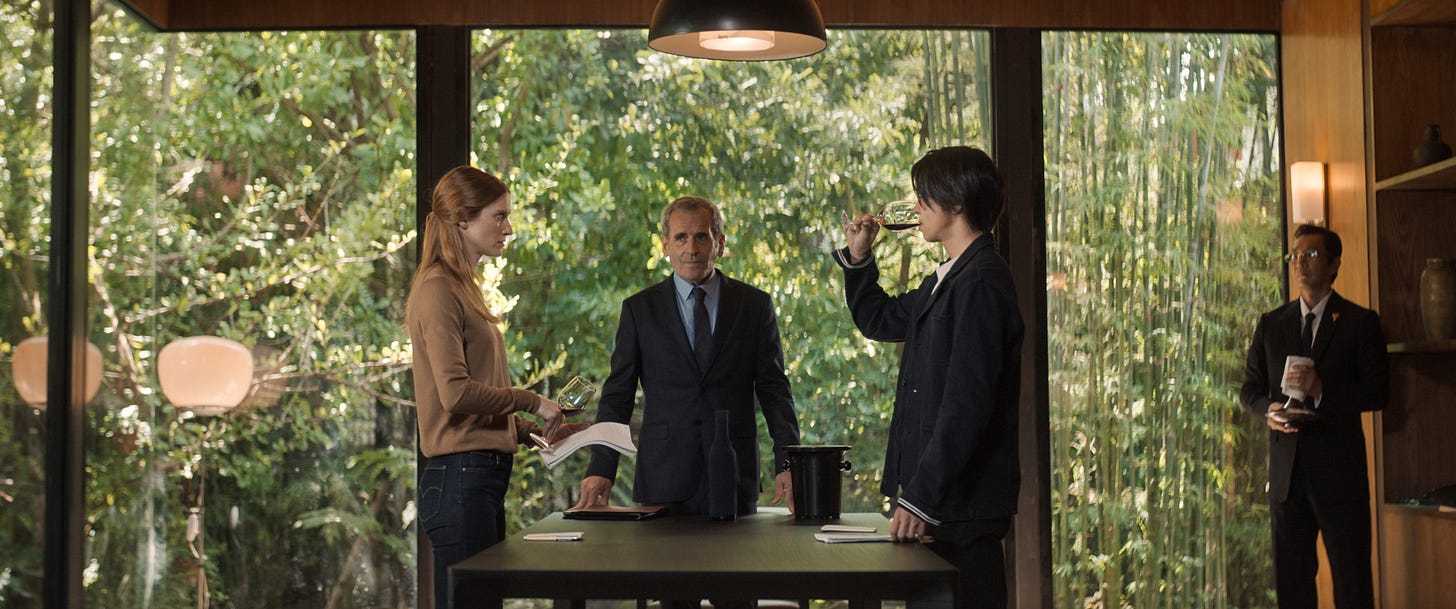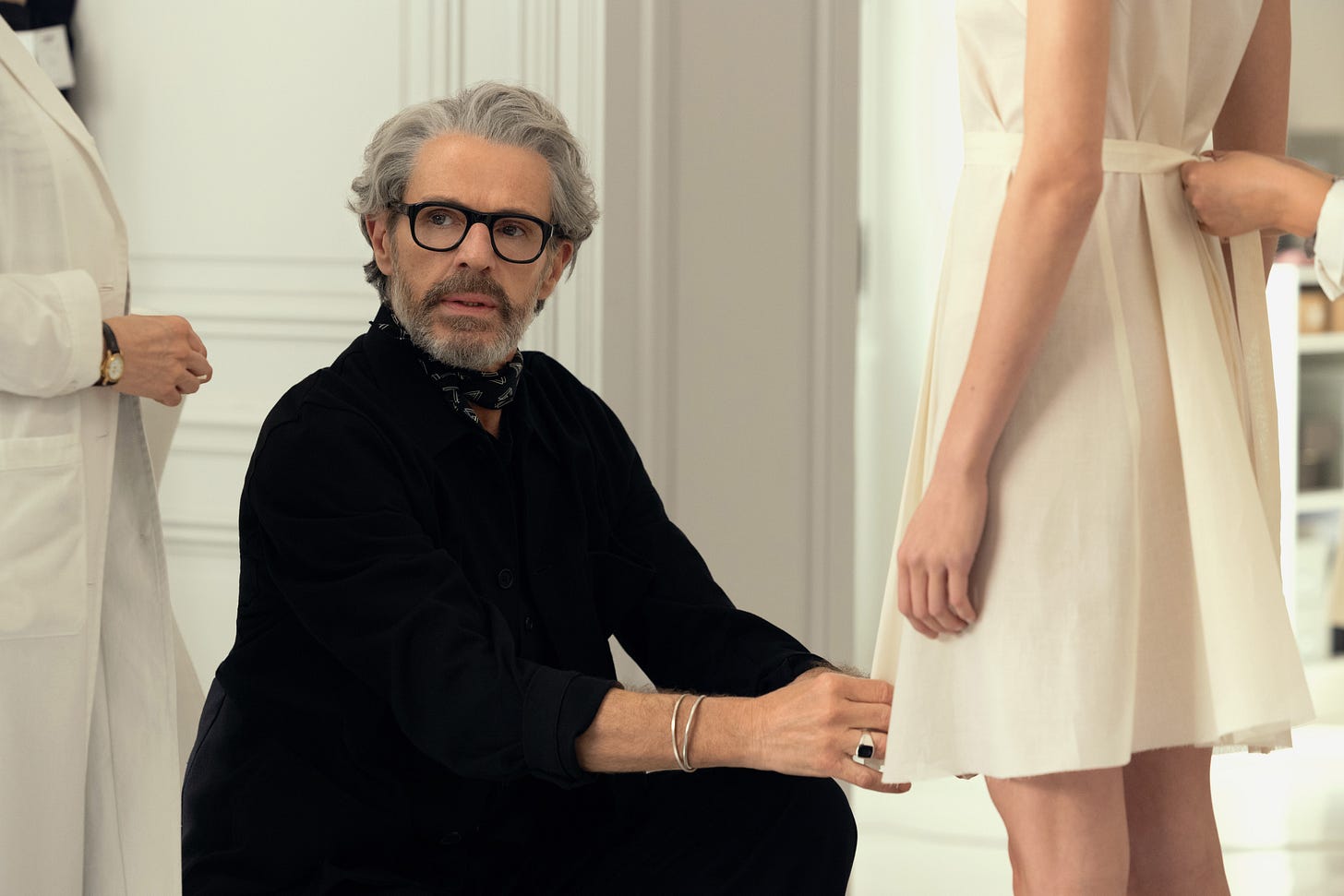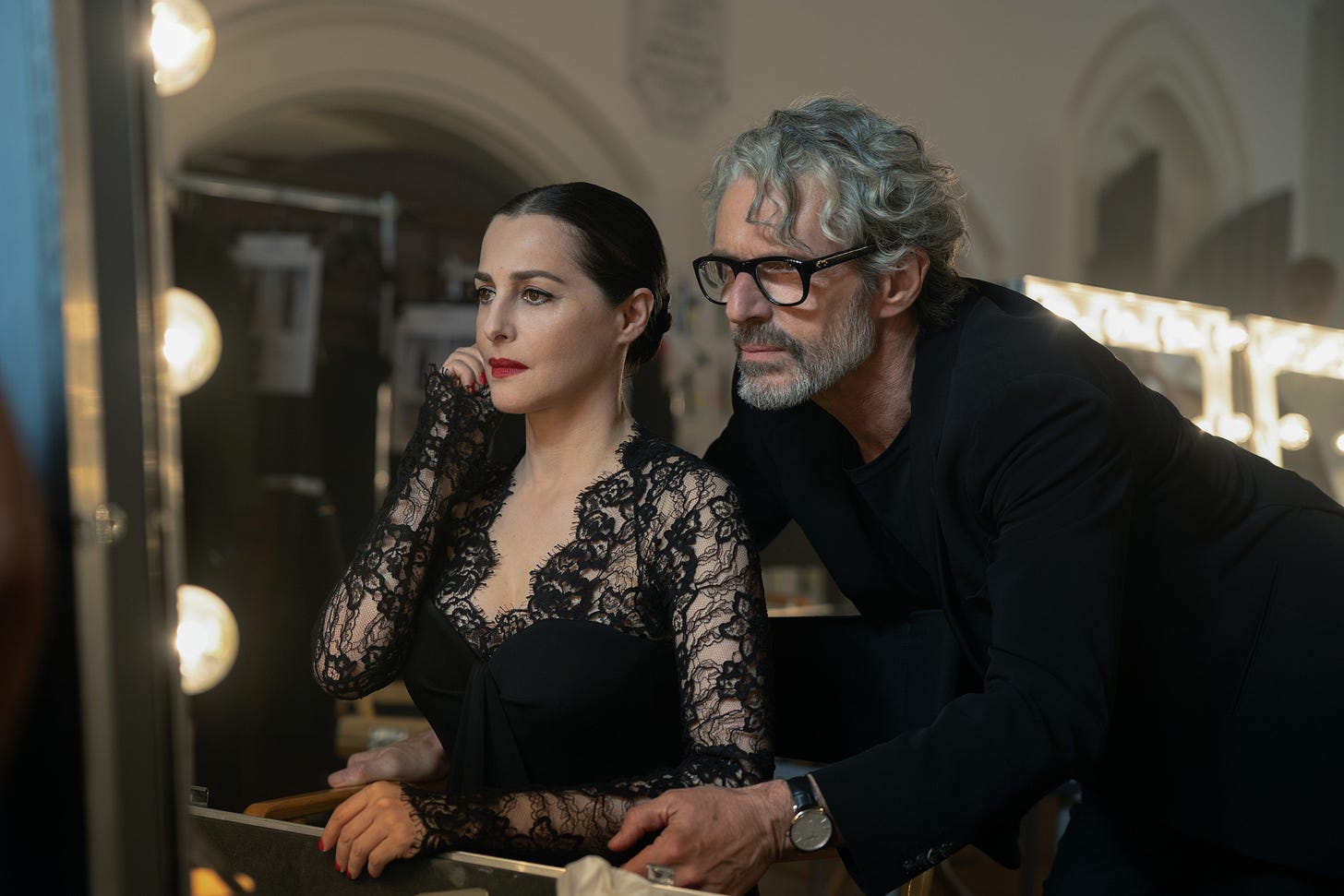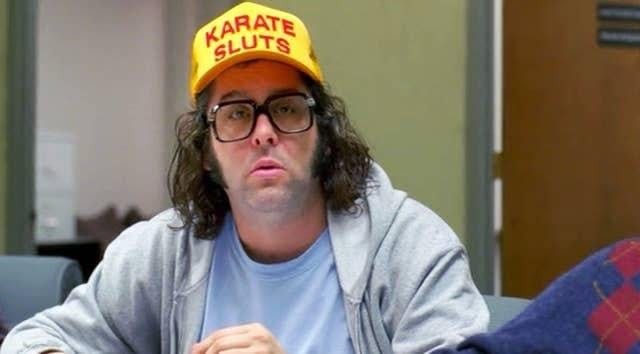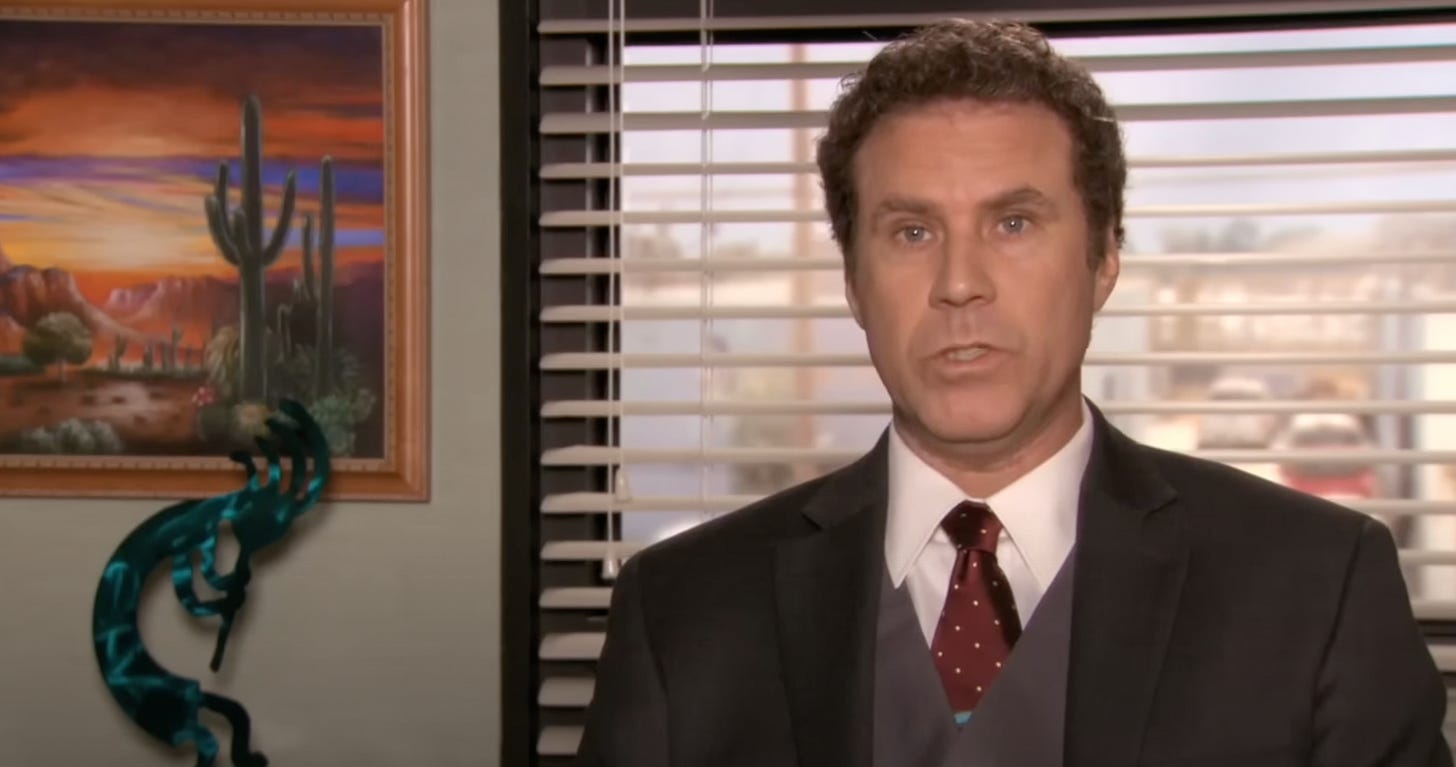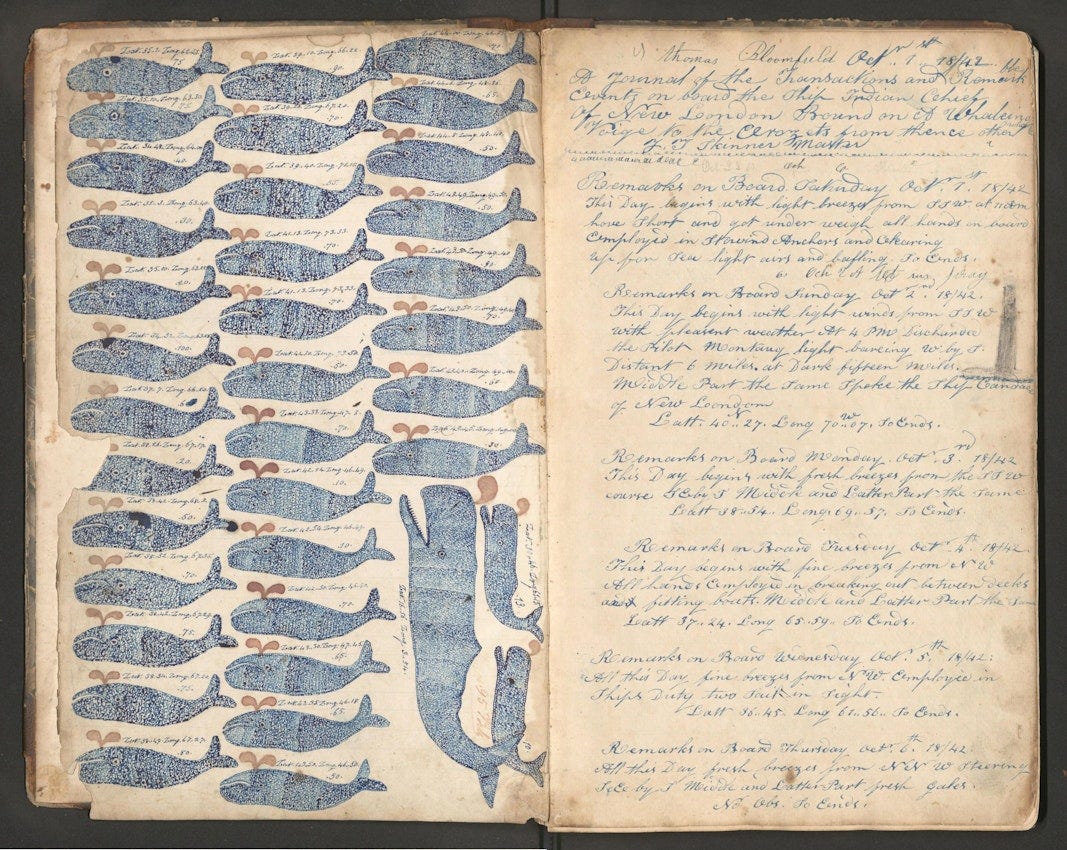A Visit to the Fall Content Orchard
Apple's Spectacular Mid TV, Big Dumb Glasses and Tom Ford's New Mexico
I. The Warm Embrace of Mid TV
Observation is proving out that peak television is behind us. It’s uncomfortable to think about. If you sit with the thought a little longer, it even starts to feel like maybe peak everything is behind us. But no matter. We’re here to talk about Mid TV.
The New York Times made me aware of the concept of Mid TV in April of this year. Apple is singled out here as the standard bearer for this new kind of prestige-ish television.
From the article:
[Apple’s] shows feel professional. They look like premium products that no one skimped on. “Palm Royale” has a loaded cast (Kristen Wiig, Laura Dern, Carol Burnett[!]) and an attention to period detail that recalls “Mad Men.” But its class farce is toothless, its atmosphere of ’60s cultural ferment warmed over. Comedies like “Shrinking” and “Platonic” and “Loot” are more nice than funny, dramas like “Constellation,” “The New Look” and “Manhunt” classy but inert.
I’m on record as loving Palm Royale, but I’m also not going to make any claims about the show being essential or important viewing. Not empty calories, but not as premium story-wise as it is looks-wise. I also noticed this phenomenon with Drops of God, a show I absolutely loved, but was seemingly ignored by audiences in large measures. The show is about wine tasting (kind of a lofty concept already), has tons of dialogue (mostly in Japanese and French, so you have to actually watch it and read subtitles instead of looking at your phone), shoots on location across many continents, and is almost unbeaten for me in its production design, costumes and cinematography—it’s an all-around gorgeous (and incredibly expensive-looking) show. It’s also somehow based on a manga, which I know nothing about, and is getting a season 2.
And now for fall 2024 comes La Maison. It’s set in a world of rival, feuding fashion houses (think of the Guccis and Diors of the world, along with LVMH, owner of an endless constellation of luxury brands, mixed in), and it’s very beautiful. Most of the show is in French, so it’s another one where you need to read the subtitles instead of your phone. It’s been described as “more diversion than art, but what diversion.” The plots and characters are really beside the point for me—we’re here for sets, costume design, and a soundtrack by Yuksek (I don’t know how that happened, but I’m on board; the theme sounds like it could be from Mass Effect 2).
And then there’s the real star—a pair of glasses on one of the main characters. These glasses are believably perfect for the details-obsessed menswear designer who wears them, so I was surprised to see no mention of them in the Vogue interview with the show’s costume designer.
I also couldn’t find anyone on the internet who had identified the maker of these glasses (but maybe we can blame bad SEO and AI pollution for that, or perhaps the lofty concept is keeping interest in the show low). For the single digit number of you who are curious, Ledu’s glasses appear to be from Maison Bonnet, makers of bespoke (!), handcrafted eyewear, which has stores in London and Paris (the sales and customization process was reviewed here by Permanent Style). I’m going off of the hexagonal array of metallic dots seen on the arms of the eyeglasses to make this guess, but maybe someone else will produce better research and a more reliable identification.

II. Big Dumb Glasses
So there’s something going on with our eyewear. For SNL, here’s a freebie proposal. Follow up the Big Dumb Hat and Big Dumb Cups sketches with ‘Big Dumb Glasses.’
Despite what the linked sketches suggest, this is not really a gendered issue. I’m equally guilty of wearing big dumb glasses, and drinking out of a big dumb hydroflask and owning quite a few big dumb woven hats. If you instead need proof of men wearing Janessa Leoné-style wool hats as an affectation, I mean that’s Nick Foquet’s entire brand sensibility.
For big dumb glasses, NYT has at least identified the large eyewear trend for women:
For my own part, I recently picked up a pair of transition lenses in a very large aviator acetate frame from Jacques Marie Mage (they have an excellent/over-the-top showroom on Abbott Kinney). These glasses are insanely great and deserve their own little spotlight, but for now I think it’s fair to say oversized glasses will sometimes make you feel like Yves St. Laurent, and other days you’ll look in the mirror and see Judah Friedlander’s Frank Rositano from 30 Rock instead. Such is the duality of man (and the peril of dressing down).
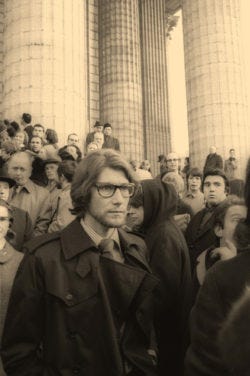
III. Doritos Cool Ranch
In all the fall menswear enthusiasm, I feel like people go to full English countryside in warp speed. Everyone wants a Barbour or a donegal balmacaan (whether your weather/climate agrees with it or not) and people start looking like they are in an ad for a very fine and peaty scotch.

But fall also seems like an overlooked opportunity for the inclusion of more Western wear (after all, it’s just a genre-specific subcategory of workwear). I’m thinking more Tom Ford’s New Mexico (he grew up in Santa Fe) and less 3:10 to Yuma. I don’t want to get all Deangelo Vickers on people here….
…but that’s going to happen since I’ve only recently returned from New Mexico. Here’s Tom Ford on growing up in Santa Fe (made even funnier/better by the addition of music and the fact that he’s talking to perpetual heel James Corden—maybe we’d all rather picture ourselves dying in New Mexico than talking to him):
Something is also really resonating with me from an interview Tom Ford gave a few years ago (“contemporary culture and big cities” always feel their least relevant/real to me after time well-spent in nature):
I feel that I don't need anything for a good life. I grew up in New Mexico and the older I get I have less need for contemporary culture and big cities and all the stuff we are bombarded with. I am happier at my ranch in the middle of nowhere watching a bug carry leaves across the grass, listening to silence, riding my horse, and being in open space. So I have some sort of security that if I lost everything in my life, I would be very happy with the simple things because they are the ones that are important.
On the subject of New Mexico ranches connected to Tom Ford, I will now present an amateurish architecture critique: a study in contrasts in the form of two ranches.
The first ranch connected to Tom Ford is something people know a lot about. Cerro Pelo was designed by architect Tadao Ando (who is mostly in the news lately for having the Malibu beach house he designed destroyed by Kanye West and Bianca Censori). It’s an amazing looking ranch, but (get your pitchforks) I hate it. I think it’s very cool, but the barren, smooth surfaces make it totally wrong for the landscape. It’s overwrought and looks like Roden Crater (seriously Turrell, when is this thing opening?) or a visitor center you’d see in a National Park. Ford sold this architectural gem in 2021 (listed for $48 million, down from the $75 million when listed five years earlier), but the final sales price is unknown.

Then there’s a home that was built on Ford’s former New Mexico ranch land (he owned some 1,000 acres in all), the Rio de Estancia (2013 by Curtis and Windham). This ranch is less celebrated (Ford didn’t build it, and it’s less costly at a more Earthbound sum of $9 million), but checks all the right boxes in my view. It looks like it belongs in its surroundings. New Mexico isn’t a moonscape, so I don’t know why you would landscape your ranch to look like one.

Here’s a picture of some wild horses I saw in New Mexico last weekend. Which of the two ranches above seems conversant with a setting like this and which one is trying to operate in defiance of it?
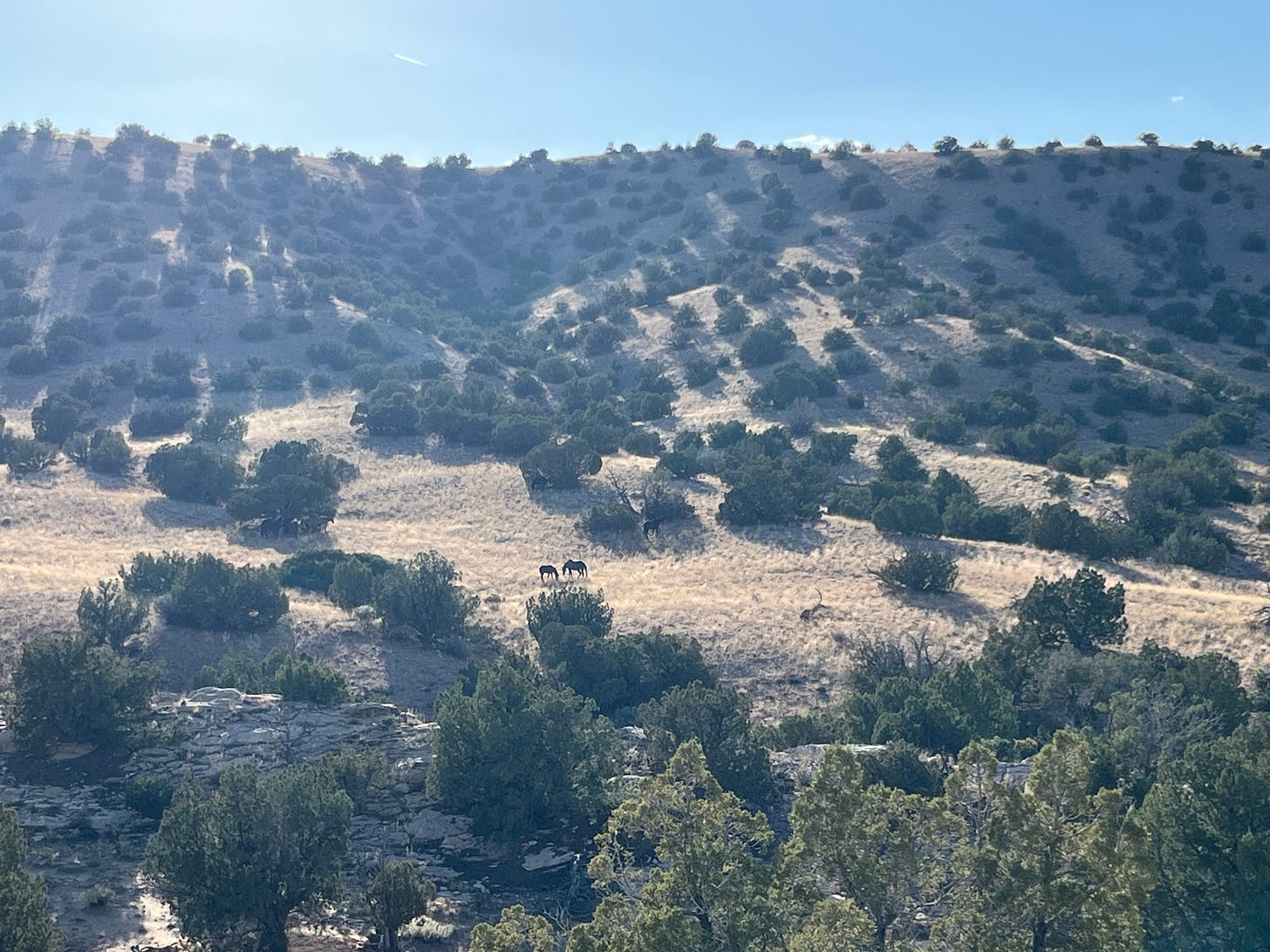
Internet Bycatch
Wherein we once more display the internet content from our drift nets.
According to Donatien Grau in the LA Review of Books, loving Proust is a very Los Angeles thing to do (Gore Vidal, John Baldessari, Frank Gehry, and Alex Israel, all get a mention). I was recently very embarrassed to have dropped in to my local bookseller to pick up my own copy of Swann’s Way (I just figured it was a classic and they’d have it in stock, but then had to awkwardly ask for help finding it, only to have them order it online for me since they couldn’t find it in-store either). This was all harrowing. If it’s pretentious reading maybe just order it online from your local and limit the embarrassment to the pick up (or better yet, have it shipped). The experience reminded me of Marc Maron barging into a record store and looking for Captain Beefheart:
“Trying to catch up, huh?”
[…]
“That’s all I’m doing.”
I last mentioned Tombolo in February—a rare example of an Instagram brand I don’t mind. I recently ran through their cabana set offerings and thought I’d leave a link here, for the other people who start thinking about next summer the second this one has ended. Below is the collaboration they undertook New York’s Explorer’s Club.
Architectural Digest with a look at the ubiquitous and high-design camp chair.
From LAist, Sandhill cranes are making a rebound in California and other parts of the West. The San Joaquin delta (duck hunters beware) and Lake Tahoe are part of their expanded (restored?) range.
And finally, a menswear long play for people as depraved as I am. I’m not an Adam Connover guy by any means, but occasionally he interviews people I really like (e.g., Dan Olson, of Folding Ideas, who deserves international recognition for helping kill NFTs and Crypto). I’m also not necessarily a Derek Guy guy (also known as Twitter Menswear Guy), but there’s some decent talk here about the longer arc of men’s fashion and formal—>casual migration in men’s wardrobes. Thinking about suits replacing frock coats (and the latter being seen as stuffy/old fashioned by the 1930s) can help us think about tailoring today. It also provides a nice look at the crisis of confidence men can face in dressing today (e.g., the crabs-in-a-bucket reaction people have if someone tries to start dressing nicer).





